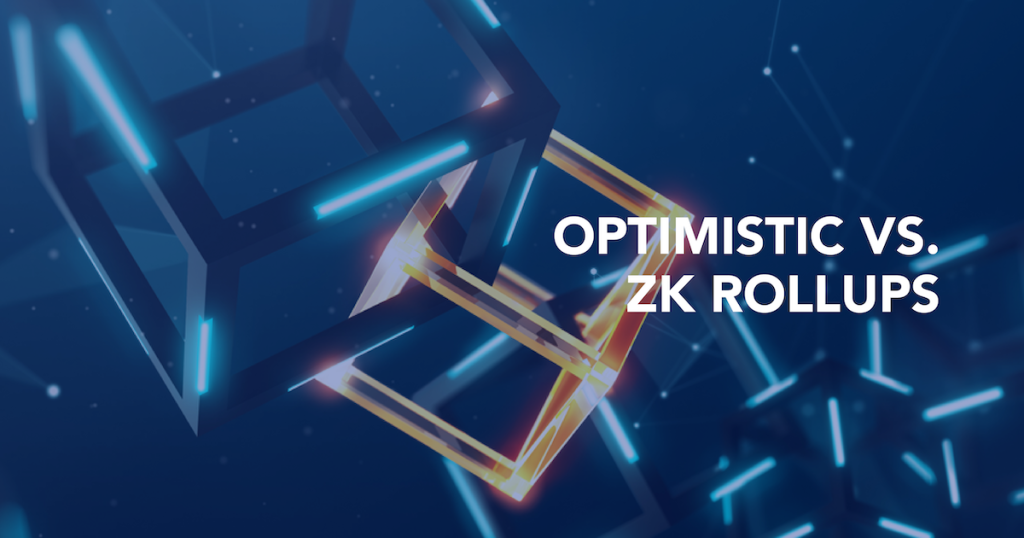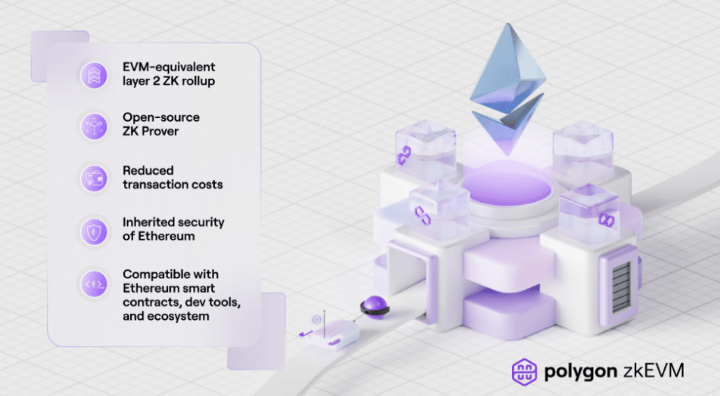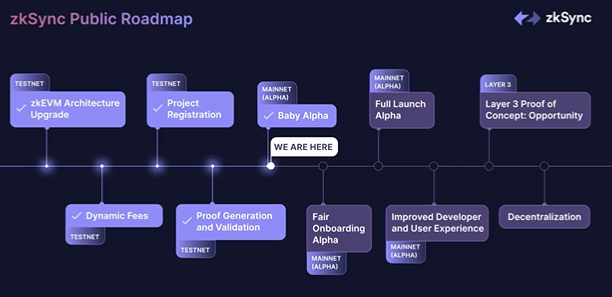Brief analysis of zkEVM battle situation: zkSync, StarkNet, Scroll and challengers
By Grant Griffith
Translator: Odaily Azuma
Editor's note: On October 28, the Ethereum expansion solution built by Matter Labs officially released the first phase of zkSync 2.0, Baby Alpha. The launch of zkSync 2.0, an EVM-compatible zk-rollup that launched the main network, is still a memorable milestone moment for the "Long March" of the expansion of the entire Ethereum ecosystem.
In the following, analyst Grant Griffith analyzes the significance of zkEVM in plain language, and compares a number of zkEVM projects, including zkSync 2.0, to help readers understand the pattern of the zkEVM competition and the latest dynamic.
The following content is compiled by Odaily, and there are certain deletions.

secondary title
Why is zkEVM important?
First of all, let’s review a question. Why is it that the TVL of optimistic-rollup is higher, but the market generally recognizes zk-rollup more?
The answer is that while both forms of rollup can bring huge improvements in scalability and tps, zk-rollup has significant advantages in transaction confirmation (no challenge period) and security,zk-rollup is generally considered more secure than optimistic-rollup because its security relies on trustless cryptography rather than on network participants being able to honestly submit fraud proofs. Of course, optimistic-rollup also has its own advantages, for example, it does not need to perform complex calculations on dedicated machines to generate proofs (which will bring other costs).

In addition to these differences, there is not much difference between zk-rollup and optimistic-rollup in theory, but it is only theoretical, because in reality, only optimistic-rollup can be well compatible with EVM for the time being, which makes the current The ecological development progress of optimistic-rollup projects is temporarily ahead of zk-rollup projects.
All public blockchains (including rollup) share a common goal - to achieve network effects as early as possible in terms of ecological adoption, it is necessary to acquire developers and users as quickly as possible - this is exactly what EVM compatibility can bring Come for convenience.
EVM compatibility is a concept related to the way smart contracts are written and deployed. If a blockchain is considered EVM compatible, it means that its smart contracts are (in general) implemented in a way that complies with EVM-specific rules. prepared. In more colloquial terms, if you copy, paste a set of code that is readable on the Ethereum network, and deploy it to another chain, if that chain supports and can handle these transposed codes, it will Considered to be EVM compliant. Considering the unparalleled developer popularity of Ethereum, compatibility with EVM is considered to reduce the obstacles for developers to settle in, thus effectively promoting the ecological development speed of the new chain.
secondary title
contestants
In view of the complexity of zero-knowledge technology and proofs, the original design of Ethereum did not consider ZK friendliness, which led to the development of general zkEVM to overcome a lot of problems. However, doors are being pushed open for innovation, so let's take a look at which projects are leading the way.
Polygon zkEVM
AnnounceAnnounceLaunched public testnet for Polygon zkEVM. This is the latest achievement Polygon has achieved after making crazy moves on the road of zero-knowledge proof technology (including the acquisition of Mir Protocol, the merger of Hermez, etc.). The testnet is currently in stress testing mode, and Polygon encourages users to deploy contracts on the network and help uncover potential bugs.
expectedexpectedPolygon zkEVM will launch mainnet sometime in early 2023.

From the perspective of EVM compatibility, although Polygon is trying to reach the level of EVM equivalence, it has not yet been fully realized. As of this writing, all EVM opcodes are supported, butThe project's Github code base shows that it has only measured 97% compatibility coverage for the time being. At this point, Polygon's branding around the "EVM equivalent" highlight has drawn some criticism, as the community is becoming more and more concerned about the difference between "fully equivalent" and "highly compatible".
zkSync
Similar to Polygon, zkSync created by Matter Labs has made a lot of announcements about zkEVM (zkSync 2.0) recently.On October 28, zkSync 2.0 just launched the first phase of the mainnet, Baby Alpha, and became the first zkEVM solution to deploy the mainnet.However, the mainnet does not yet support any external projects, and the team is continuing to conduct stress tests to ensure that everything is performing as expected.

According to the roadmap officially disclosed by zkSync, the next stage after the first stage is Fair Onboarding Alpha, where developers can migrate to zkSync and start building applications on the network. Currently, more than 100 projects, including Uniswap, have expressed their intention to deploy their applications on zkSync 2.0. The next stage is Full Launch Alpha, when the network is fully open to everyone, which is expected to happen around the end of the year.
From the perspective of EVM compatibility,zkSync 2.0 is moving towards being EVM compatible (not equivalent)text
Scroll
When it was announced at EthCC 2022 that it was working on zkEVM, Scroll might not have been as well-known as some of its competitors. However, that doesn't mean we can ignore the project.A few weeks ago, Scroll had announced an upgrade to its alpha testnet, supporting the deployment of smart contracts, this upgrade gave developers the first opportunity to interact with the Scroll infrastructure. It is expected that Scroll will launch a larger-scale alpha test network and open it to all users.
EVM compatibility is the same as Polygon zkEVM,Scroll is also working towards a full equivalent of the EVM, which includes direct support for each EVM opcode. However, Scroll has not yet done all the core work.
StarkNet
When it comes to ZK-STARK technology, Starkware is undoubtedly the pioneer. StarkNet alpha was launched on the Ethereum mainnet as early as November 2021, and more than 100 projects are already being built on the platform.
In terms of EVM compatibility, unlike some other rollup projects, the basic smart contract language used by StarkNet is not Solidity, but Cairo, so it is not compatible with EVM itself. However, the team is actively building some ways to improve compatibility,Nethermind's Warp project is building a Solidity-Cairo "compiler", which allows projects written in Solidity to "one-click" translate their codebase into Cairo for deployment on StarkNet. This "compiler" is still under development, and once live, it will enable StarkNet to achieve a similar level of EVM compatibility as zkSync 2.0.

It is worth noting that,A few days ago Starkware just launched a new product called Kakarot, which is an EVM based on Cairo. It will be able to run Ethereum's smart contracts on StarkNet, raising the level of EVM compatibility to the current level of Polygon and Scroll. There are still very few details about this product. Starkware has been emphasizing the number 9000. Although the specific meaning is still unknown, it is most likely referring to tps.
Taiko and other new projects
Not all projects working on zkEVM have produced tangible results like the previous few projects. Taiko, for example, is one of the latest projects working in the zkEVM field. The project shared its white paper for the first time a few weeks ago (October 7). Users and infrastructure providers create the smoothest path in terms of adoption.
summary
summary
articlearticle, the article basically covers the major rollups mentioned above.
A core point of Vitalik is that,Differences in EVM compatibility don't necessarily mean a rollup is better or worse. We need to consider some other trade-offs,Rollup with low compatibility may have certain disadvantages in attracting developers, but at the same time it may also bring some other flexibility advantages. Keeping this in mind when analyzing different rollups, when a zkEVM does not seek EVM equivalence, can it offer other advantages that justify this trade-off? What is the best path? The market still has no answer for the time being. Different projects are exploring different directions, which is beneficial to the entire industry.
secondary title
further reading
Comparing Scroll and Hermez, understanding zkVM and zkEVM;
Foresight Ventures: Starting from Polygon zkEVM, understanding zkEVM Rollup;
Everything you need to know about zkEVM (1);
Everything you need to know about zkEVM (2);



